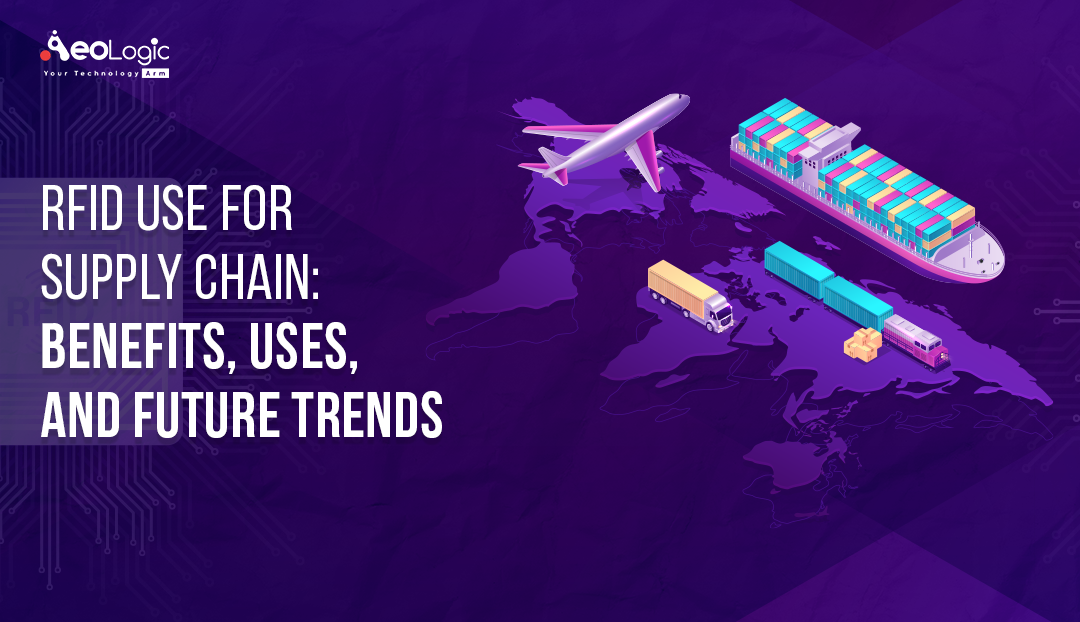Ever picked up an item from a store shelf and wondered how it got there? Behind every product is a symphony of movements and tracking, all to ensure it reaches you on time. And one of the unsung heroes in this process? The use of RFID in supply chain.
What Is RFID? A Quick Overview
Radio Frequency Identification (RFID) is a technology that uses radio waves to identify objects. Imagine it as a supercharged barcode system but without needing a direct line of sight. RFID tags, which can be as small as a grain of rice, hold data about the item they’re attached to. When these tags come close to an RFID reader, they transmit this information, making tracking and identification a breeze.
The Statistics of RFID in Supply Chain
Before diving into the wonders of RFID, let’s sprinkle in some statistics to show just how significant this tech is:
- By 2025, it’s estimated that the global market for RFID tags will be worth $31.42 billion. [Source: Grand View Research]
- The use of RFID in supply chain management can increase inventory accuracy by up to 95%. [Source: RFID Journal]
Now, with the stats in place, let’s dive into why RFID is making such waves in the supply chain industry.
Benefits of RFID in Supply Chain
Harnessing the power of radio waves, RFID is revolutionizing the supply chain landscape. As we delve deeper, let’s unravel the benefits this technology offers, making operations seamless and efficient.
1. Real-Time Tracking
Behind every successful supply chain system is the need for real-time tracking. RFID offers this luxury, changing the landscape of how businesses monitor the flow of their goods. No more second-guessing or lengthy waits for updates; with RFID, clarity is just a tag away.
- Instant Updates: As products pass through various points, updates are instantaneously recorded.
- Enhanced Visibility: No more “lost in the mail” scenarios. Every item is accounted for.
2. Improved Inventory Management
Inventory mismanagement can be a nightmare for businesses. RFID sweeps in like a knight in shining armor, making manual stocktakes and inventory discrepancies things of the past. The result? Streamlined processes and a better grip on stock levels.
- Automated Counts: Stock levels can be automatically updated, leading to accurate inventory figures.
- Reduced Wastage: Knowing stock levels means less over-ordering and hence reduced wastage.
3. Increased Efficiency and Reduced Costs
Time, they say, is money. In the supply chain world, efficiency can mean the difference between profit and loss. With RFID, businesses are finding more ways to do things faster, better, and at a reduced cost.
- Faster Checkouts: In retail environments, items can be scanned in bulk, not one-by-one.
- Less Manpower: Automated processes mean less need for manual checks, reducing labor costs.
4. Enhanced Security
In an age of digital sophistication, security has never been more critical. RFID provides a shield, safeguarding products and ensuring that what’s inside the box matches what’s on the label. This enhances trust and cements brand integrity.
- Anti-Counterfeit: By embedding RFID tags, products can be authenticated, reducing the risk of counterfeit items in the supply chain.
- Theft Prevention: In retail settings, RFID can act as a theft deterrent, triggering alarms if items are taken without being checked out.
5. Seamless Integration with Other Technologies
The beauty of technology lies in its ability to evolve and work in tandem with other innovations. RFID is no exception, acting as a versatile tool that blends seamlessly with various tech solutions, making it an invaluable asset in the ever-evolving supply chain landscape.
- Tech Synergy: RFID can be easily integrated with other technologies like AI and machine learning for predictive analytics.
- Scalability: As businesses grow, RFID systems can scale up to match the pace, ensuring continuous flow and tracking.
Also Read: How RFID Tagging Solutions for Ammunition Will Help the Soldiers
How RFID is Currently Used in Supply Chain
Let’s see how the magic of RFID is already transforming industries:
- Retail: From warehousing to store shelves, ensuring products are where they need to be.
- Pharmaceuticals: Ensuring the authenticity and safe transit of medicines.
- Food Supply: Monitoring perishable goods to ensure freshness.
- Manufacturing: Tracking parts and finished goods in real-time.
| Sector | Key Benefit of RFID |
|---|---|
| Retail | Rapid inventory checks and theft reduction |
| Pharmaceuticals | Verification of authenticity and safe transit |
| Food Supply | Real-time freshness tracking |
| Manufacturing | Enhanced real-time visibility of parts and completed items |
Also Read: Benefits of RFID Asset Tracking in the Supply Chain
What’s Next? Peeking into Future Trends
The journey of RFID in supply chain is only gaining momentum. Let’s venture into what the horizon holds:
1) Integration with IoT
The Internet of Things (IoT) combined with RFID is the next frontier in automation. Imagine smart fridges that can read RFID tags on food items and suggest recipes based on what’s inside. Or perhaps warehouses where every item communicates with the central system, automatically reordering when stock gets low. This harmonization between devices and RFID will make operations even more seamless.
2) Enhanced Data Capabilities
Tomorrow’s RFID tags won’t just carry basic data. They could store condition-based data like temperature, exposure to light, or even real-time feedback on product conditions. For perishable goods, this could mean tags that alert logistics providers if temperatures fluctuate beyond safe limits, ensuring better quality control from manufacturer to consumer.
3) Eco-friendly Tags
As the global push for sustainability grows stronger, the RFID industry won’t be left behind. Biodegradable or recyclable RFID tags might become the norm, ensuring that as we track goods, we’re also being kind to our planet. Combining eco-consciousness with technology, we can ensure a sustainable future in every sense.
4) Beyond Products
The application of RFID in supply chain won’t stop at products. Think about the possibilities when it comes to tracking vehicles or containers. A logistics company could monitor a fleet in real-time, predicting maintenance needs, optimizing routes, or even ensuring driver safety. And in factories, worker movements could be streamlined for efficiency, all while prioritizing safety.
5) Greater Security and Encryption
Data is the new gold, and protecting it is paramount. As RFID usage escalates, so will the need for heightened security measures. Advanced encryption techniques will be integrated into RFID systems, ensuring data integrity and confidentiality. Users can trust that the information flowing through these tags is not just efficient but also secure from potential threats.
Also Read: Benefits of RFID in Asset Tracking Management for the Navy
Final Words
From the stats to the real-world applications and future trends, it’s clear that the role of RFID in supply chain is monumental. This tiny tech packs a punch, promising smoother operations today and even smarter solutions tomorrow. As businesses continue to evolve, it’s certain that RFID will remain an invaluable tool in the symphony that is supply chain management.
Interested in enhancing your supply chain with RFID? Connect with Aeologic Technologies for cutting-edge solutions.









